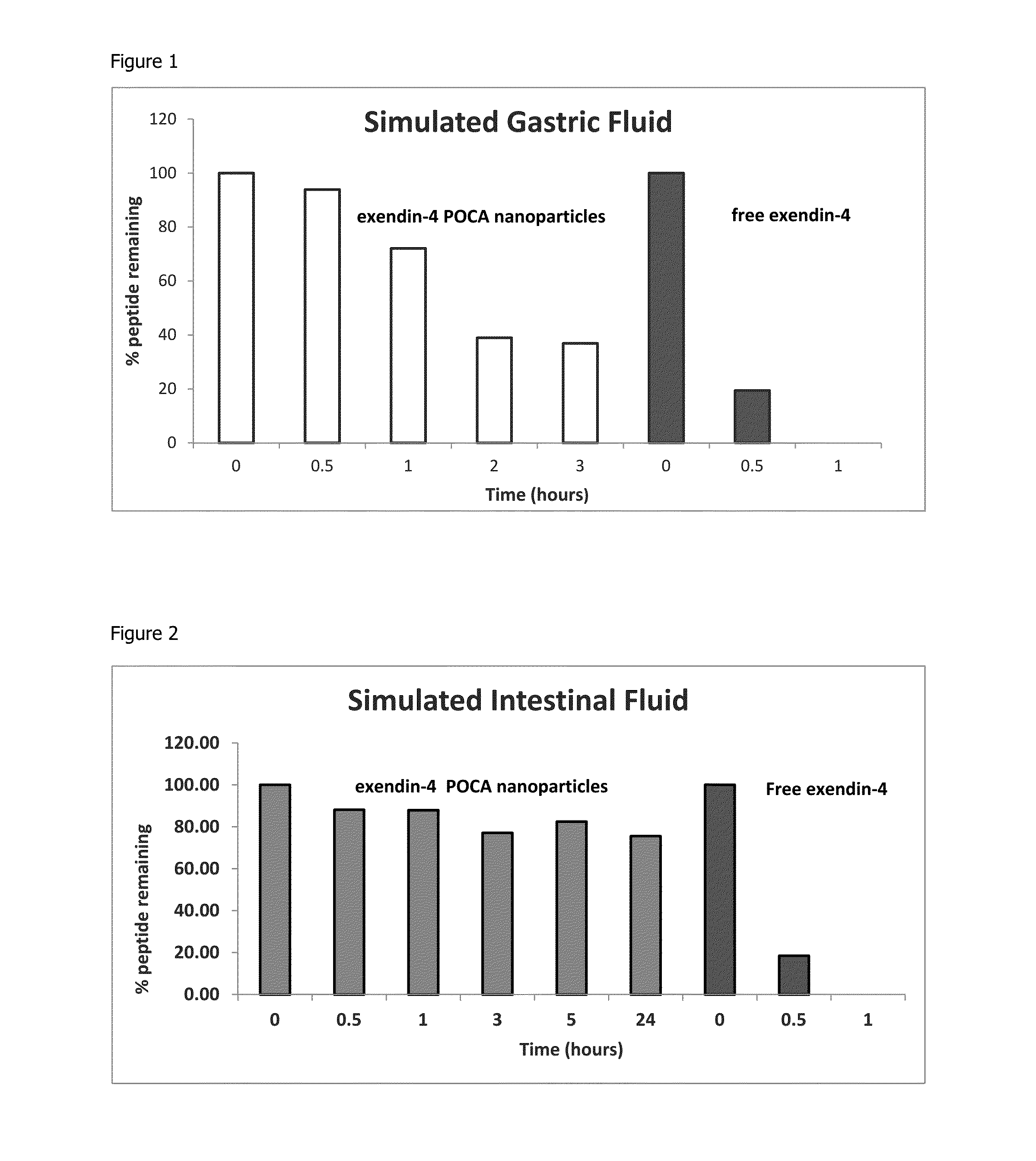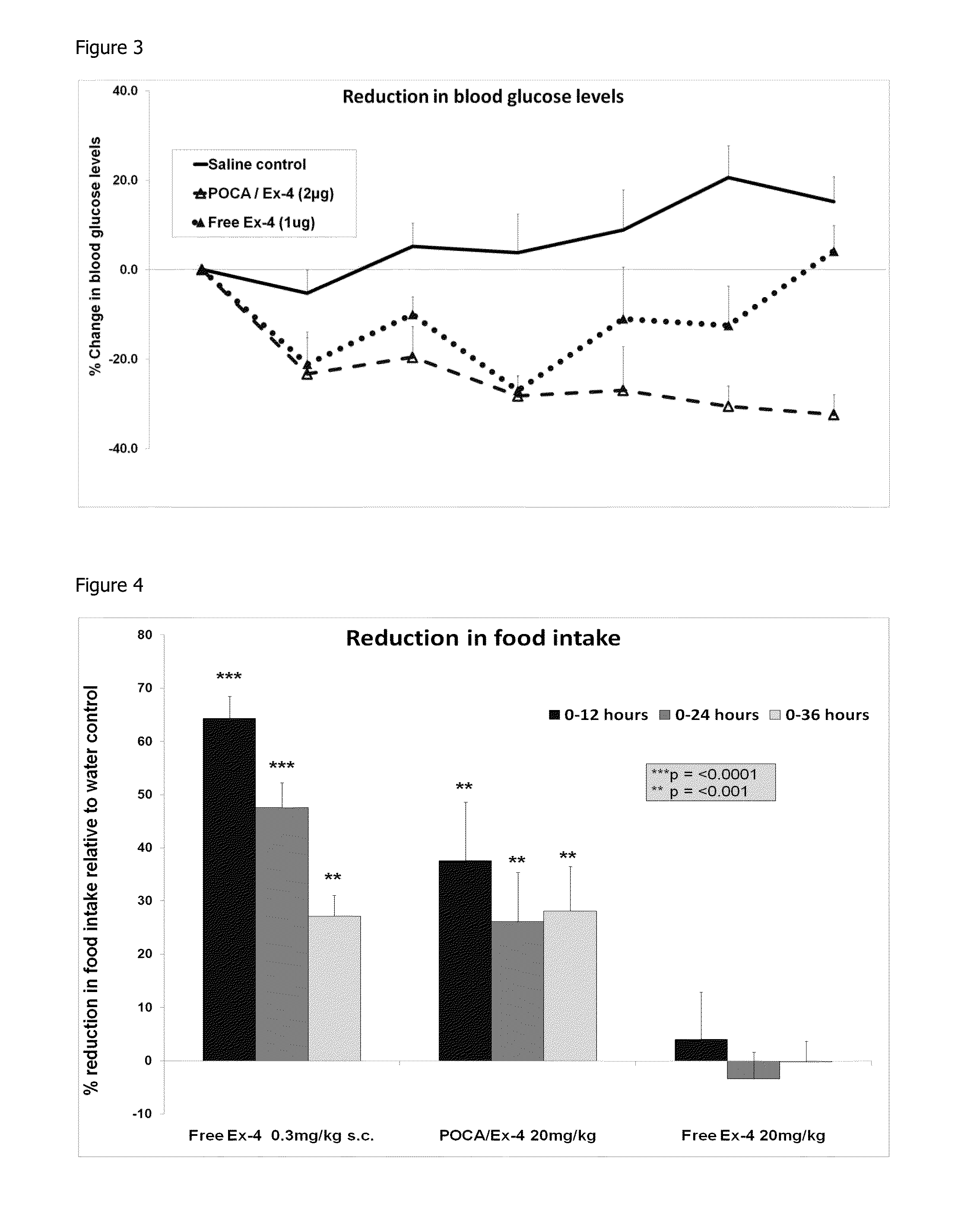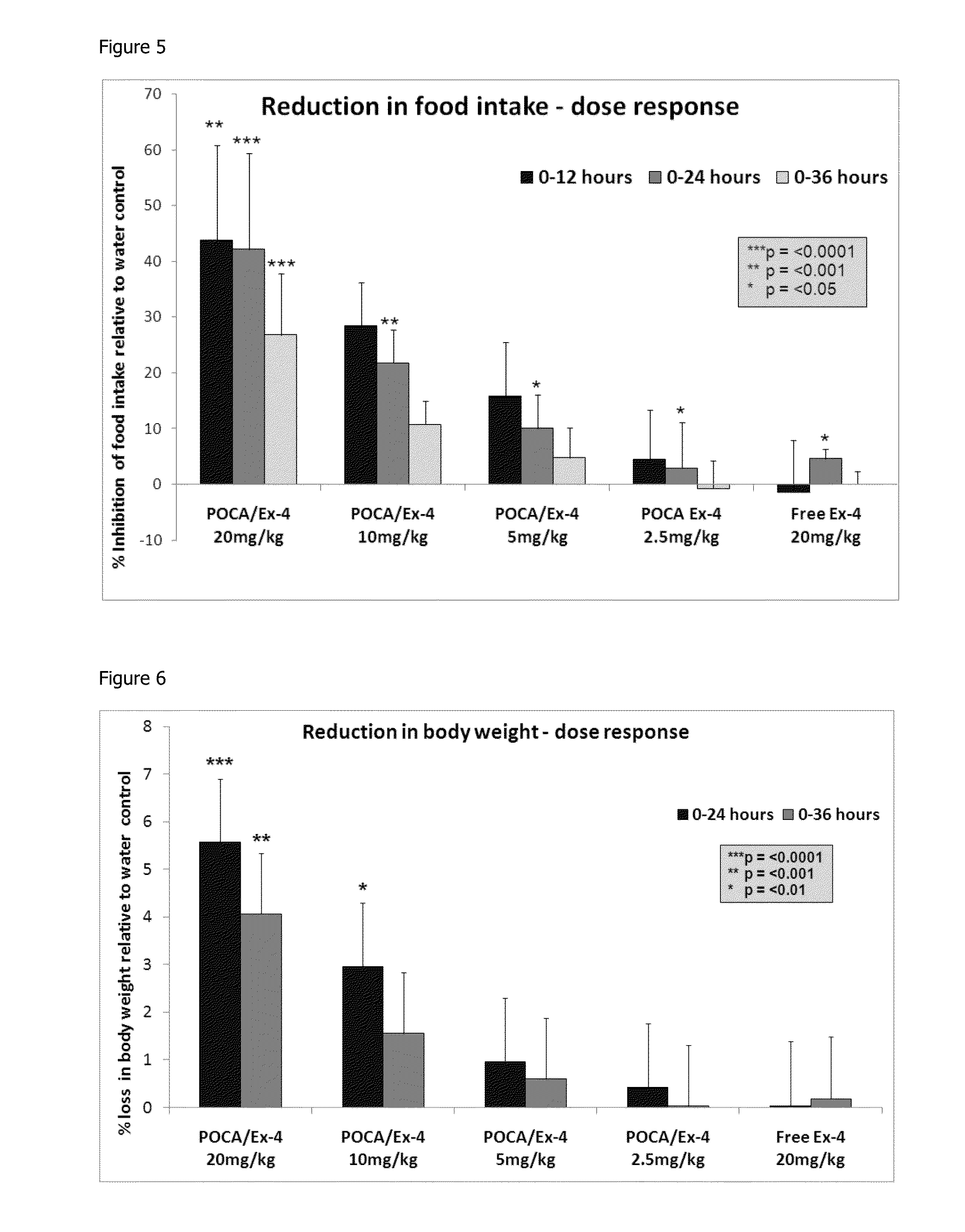Polypeptide loaded poca nanoparticles for oral administration
a polypeptide and nanoparticle technology, applied in the field of biopharmaceuticals, can solve the problems of reducing patient compliance, affecting the effect of drug safety, and molecule not normally orally bioavailable,
- Summary
- Abstract
- Description
- Claims
- Application Information
AI Technical Summary
Benefits of technology
Problems solved by technology
Method used
Image
Examples
example 1
Preparation of POCA Nanoparticles Loaded with Exendin-4
[0087]Summary of nanoparticle preparation process:[0088]a) Dissolving octylcyanoacrylate (OCA) in an organic solvent to form a monomer solution;[0089]b) Adding the monomer solution to an acidic aqueous solution containing a surfactant and a stabiliser under magnetic stirring to form an emulsion of organic droplets in an aqueous phase;[0090]c) Adding an aqueous solution of a peptide to the emulsion;[0091]d) Neutralising the emulsion on completion of the polymerisation reaction;[0092]e) Allowing the organic phase to evaporate and thereby obtaining an aqueous suspension of poly(octylcyanoacrylate) (POCA) nanoparticles containing the peptide.
Detailed Methodology
[0093]Loading the Poly(Octylcyanoacrylate) Nanoparticles with Exendin-4.
[0094]Poly(octylcyanoacrylate) nanoparticles containing exendin-4 were prepared as follows:
Preparation of Organic and Aqueous Phases:
[0095]Aqueous phase: pH 2.0, 0.5% w / v dextran, 1.0% w / v PLURONIC™ F68 a...
example 2
Stability of POCA Nanoparticles
[0117]The ability of the POCA nanoparticles produced by the method of example 1 to protect an encapsulated peptide from degradation in the gastrointestinal tract was demonstrated by incubating the nanoparticles in simulated gastric and intestinal fluids formulated as follows, based on the TNO-TIM™ gut model system:
[0118]Simulated Gastric Fluid (SGF):
[0119]Gastric salt solution (10× concentrated) was prepared using 31 g (+ / −0.5 g) sodium chloride, 11 g (+ / −0.2 g) potassium chloride, 1.5 g (+ / −0.03 g) calcium chloride dehydrate, made up to a total of 1020 g (+ / −10 g) with purified water and ensuring the salts dissolved.
[0120]Gastric salt solution was then prepared using 51 g (+ / −0.5 g) gastric salt solution (10× concentrated) and 3.58 g (+ / −0.05 g) 1M sodium bicarbonate made up to 500 ml (+ / −0.5 g) with purified water.
[0121]Gastric enzyme solution was freshly prepared using 150 g of gastric salt solution acidified to pH 5.0 with 1M HCl. 1125 units of lip...
example 3
In Vivo Analysis of POCA Nanoparticles Loaded with Exendin-4 (i.v. Administration): Reduction in Blood Glucose Levels
[0133]By utilising the blood glucose modulating property of exendin-4, an in vivo study was carried out to demonstrate the release of functional exendin-4 from the POCA nanoparticles, produced by the method of example 1, upon entry into the bloodstream. C57BL / 6 mice were given a single i.v. dose of exendin-4 loaded POCA nanoparticles (equivalent to 2 μg peptide / 100 μl), non encapsulated (free) exendin-4 peptide (equivalent to 1 μg / 100 μl) or saline as a control. In order to monitor blood glucose levels, 2-3 μl blood samples were taken from the peripheral tail vein of each animal prior to dosing and again at 0.5, 1, 2, 3, 4 and 8 hours post dose. Each sample was analysed using a hand held glucose monitor (BAYER ASCENSIA BREEZE 2™). Values were expressed as a percentage change in glucose levels from baseline and the results are shown in FIG. 3.
[0134]Significant reductio...
PUM
| Property | Measurement | Unit |
|---|---|---|
| Fraction | aaaaa | aaaaa |
| Fraction | aaaaa | aaaaa |
| Hydrodynamic diameter | aaaaa | aaaaa |
Abstract
Description
Claims
Application Information
 Login to View More
Login to View More - R&D
- Intellectual Property
- Life Sciences
- Materials
- Tech Scout
- Unparalleled Data Quality
- Higher Quality Content
- 60% Fewer Hallucinations
Browse by: Latest US Patents, China's latest patents, Technical Efficacy Thesaurus, Application Domain, Technology Topic, Popular Technical Reports.
© 2025 PatSnap. All rights reserved.Legal|Privacy policy|Modern Slavery Act Transparency Statement|Sitemap|About US| Contact US: help@patsnap.com



